There’s this concept in the restaurant industry that preparing an omelette is a good litmus test of a cook’s abilities in the kitchen. When I was first getting into cooking, I even remember hearing stories of chefs asking aspiring cooks to make them an omelette as a final test during the job interview. Why an omelette? The idea is that omelette-making relies on several skills crucial to restaurant cooking: heat management, attention to detail, timing, and delivering consistently good results on demand (to name a few). And, since the dish uses so few ingredients and the end result is served so simply, there’s nowhere to hide your mistakes; when you’ve finished preparing it, all you have before you is a symbol of your own ability, laid bare and served forth. Gulp.
The first time I stepped foot into a restaurant kitchen was during a three week, part-time internship (referred to in the industry as a “stage”) at Lula Cafe in Chicago. Day one was a disaster. My initial task was to peel about 25 onions and within five minutes (onion skins flying and my knife left in a careless place) I had cut myself, was bleeding, and had to ask the sous-chef to help me put on a Bandaid. Next, I was asked to move a sheet tray of curing salmon (whole sides buried under a mixture of sugar, salt, and dill) to the walk-in refrigerator. As I was trying to fit the large, heavy tray into a speed rack (a little shelving unit), I spilled about 3 cups of salty, sticky fish juice all over the floor. The kitchen staff got to work mopping as I blushed, cursing myself. Toward the end of that flustered, chaotic day, the sous-chef asked me to roll long, thin pastas by hand and form groups of the finished noodles into little bird’s nests for boiling. Halfway through, my back and forearms were aching so much from the repetitive, foreign motion that I had to stop. Ashamed, I passed the responsibility back to the already very busy sous-chef. She was very kind, and suggested stepping out to get some air. I remember standing outside in my apron and too-big chef whites and feeling very embarrassed, weak, and stupid. After some deep breaths, I headed back inside to finish up the shift. As I was leaving, a slightly older man asked me how long I’d been there — I said it was my first day, and asked him the same. “Um. I own the restaurant,” he said. Turns out I’d just asked the chef/owner how long he’d been working there. Awesome. Needless to be saying it, I left the restaurant feeling like a total failure.
That first day, though, something happened that I honestly think changed my life. Halfway through the shift, one of the cooks asked if I was hungry. Hungry always, and excited at the idea of taking a break, I said yes. He left, and I continued with my assigned task: trying to push a thick pozole base through a fine meshed sieve, bright red chili paste splattering onto my clothes and glasses with every thrust of the ladle. A few moments later, the friendly cook came back. He patted me on the shoulder, said “here you go,” and placed it in front of me: a beautiful, smooth, bright yellow, perfectly ovular, shiny French omelette topped with thin, microplaned black truffle. I was blown away. I’d never seen something so pretty. I forked off a small bite, brought the quavering curd to my lips, and took a bite. It blew my mind. Tender creamy buttery rich incredibly eggular insides all swaddled beneath a golden, glossy, pockless outside layer of egg. He had made me a French omelette, and it was one of the best things I’d ever tasted.
Back home, the embarrassment I felt about my failures at Lula, along with the reverence I felt towards the professional cooks there, left me with a deep desire to become as good as I possibly could at cooking. And that journey started with the French omelette. I made it my life mission to perfect the dish, and started making one for myself nearly every morning.
I studied the greats, watching Jacques Pepin and Julia Child videos over and over again and trying to emulate their technique. Everyone and their mama seemed to have their own little methods. Julia didn’t use a spatula or a fork (!!) while cooking the eggs, opting instead to simply shake the pan vigorously. Jacques used the back of a fork to move the curds around, a method I still don’t totally understand. David Kinch added water to his eggs before scrambling — you get the point. The results of their French omelettes, though, were basically the same: a thin, smooth, fully-set (but not browned) outside layer of egg enveloping a small-curded, creamy center. Watching these cooks make omelettes was like watching a magic trick. One moment, eggs were being carefully scrambled; the next, they'd vanished — wrapped around themselves and transformed into an elegant, uniform egg package. The entire feat was completed in under two minutes, and they really made it look easy.
But what appeared so effortless in the videos felt panicked and clunky in my own kitchen. The first half of the process usually went okay: I’d set a nonstick pan over medium heat, crack three eggs into a bowl, salt and whisk them (being careful not to incorporate too much air, per Jacques’ recommendation), slide a big knob of butter into the pan, wait for the bubbling to stop (per Julia), add the eggs, and after a brief moment, start working the eggs relentlessly with a rubber spatula, scrambling and shaking the pan to create small curds, slipping a spatula under and around the edges and reincorporating them so they didn’t overcook. So far so fine.
Once the eggs started to look like an undercooked soft scramble (Jacques likes it “a little wet”), the trouble began. As I tried to roll the omelette up — which in the videos seemed to take no more than a few flicks of the wrist — edges would stick to the pan, tearing or crumpling when I folded them over. At this point, I was left with a misshapen log rather than the beautiful half moon I’d seen my favorite chefs produce. Still, I’d do as they did, tapping the handle to try to get the far edge to curve up towards me (it didn’t), switching the pan handle to my right hand (feeling like an idiot), and carefully rotating the pan up and over to turn the omelette out onto the plate (fearing stickage and floppitude).
When I lifted the pan from the plate, the omelette that was left behind was never right. Never. Right. Either it had stuck to the pan during dismount and become a ragged pile of eggs, had overcooked on the outside, or was craggy and uneven where it should have been uniform and smooth. It infuriated me. Ugly omelette after ugly omelette, every day of the week. So frustrating. I just couldn’t get it right. The outside of my omelettes, even after a couple years of making them several times a week, remained wrinkled and pockmarked. I kept trying, watching videos, and searching cookbooks for answers, but my results continued to be uneven, my eggs sackish and disappointing.
I’m not sure if I got fatigued by eating the same flavors and textures every morning, or by the persistent feeling of failure as I stared down at crag-laden surfaces, but eventually I tired of French omelettes. I tried dolling them up — stuffing them into corn tortillas alongside homemade kimchi for some sort of breakfast fusion fuckery. Maybe that was a way to hide the flaws or minimize my own need for perfection in making it. But eventually, I became bored of that too, and I started to get a little yucked out by not-quite-set eggs creaming out of the end of my breakfast tacos. So, I gave up. And in my journey to master the French omelette, I believed that I had failed. I couldn’t internalize the technique and, I thought, if a cook can be measured by his ability to make an omelette, I was not a good cook.
Afterwards, I put that feeling deep away, and I forgot about omelettes for a while. I didn’t realize it at the time, but my religious omelette-making was actually the beginning of a rotating breakfast-food-obsession that persists to this day. I still go through phases where I make the same breakfast item every morning for several months with the vague goal of getting to know it inside and out. Omelettes begat yogurt (an opportunity to get better at suprêming citrus), which begat smoothies (during manic dieting moments in my life — no questions please), which begat oatmeal (toasting the oats, rolled oats vs. scottish, soaking the oats in kefir overnight, etc). Over the years, many of the savory staples have made their way into the rotation.
After a brief stint with cornbread, and another with buttermilk biscuits, my rotating morning meal obsession eventually and inevitably led me to breakfast potatoes. I love all types — frozen shreds, Mcdonald’s patties, country home fries — and as long as they're golden brown and extra crispy, I’m a happy boy. But, as much as I love eating them, I quickly realized that I am not particularly fond of making breakfast potatoes. The thing about breakfast potatoes is — you want them to have stark textural contrast (super crunchy and tender potato in the same bite), but you also don’t usually want to spend 45 minutes on one component of your breakfast. And those two desires are usually mutually exclusive. Still, I wanted my crispy potatoes in the morning.
At this point, I’d been cooking for about a year in a nice restaurant where consistency and excellence was expected of you; so, when I had the energy to cook at home, my interest was either in exploration of new techniques or in making food as fast as I possibly could so I could get back into bed. On the potato front, the problem haunted me: how to make breakfast potatoes that are crispy, quick, and relatively low maintenance? I casually cycled through several techniques on my quest to find the perfect method, but none of them seemed quite right1. Then, one day last year, as I was peeling a potato in the morning, I had an idea. How thin these strips of potato peel were! These would probably fry up so fast and crispy… so fast… so… crispy…
Standing over a hot skillet, I continued peeling the potato, voyaging beyond the holy barrier of the skin, and into the forbidden flesh. Working with my peeler from potato head to toe, I stripped long, one inch wide pieces of the potato meat into long, curvy, Bandaid-like strands; they fell from their carcass directly into the hot oil, embracing the pan with a satisfying tsssssss. I continued eagerly, wavy strips flying and falling, rotating the potato as I started to get close to my knuckles, slowly whittling away at the potato like Michaelangelo with David (yes, I am Michaelangelo in this simile and David is potato), struggling to get the last bits and eventually grabbing a fork, sticking it into my now-small potato cube, and continuing on until there was nothing left to peel. Before me in the pan was a patchwork of non-uniform but very thin peeled pieces of potato flesh, woven together like a surreal pie crust lattice. Within moments the steam or maybe the starch glued all the disparate strips together into one solid, movable potato disk. I salted it. Dare I give it a flip? I did, and as its untouched face made contact with the hot pan, the underside revealed itself to be supremely golden brown and crispy. I slid another small glug of oil into the pan and then…I noticed the eggs.
In A Beautiful Mind type moment, my destiny was revealed: I would make a crispy peeled potato omelette. Brilliant!!! I took a peak at the underside of the peeled potato webbing — crispy. I quickly salted and scrambled two eggs and tipped them down the side of the pan and around the outside of the potatoes. The eggs creeped into the crevices, finding and filling out holes in the potato valleys like sea water rushing through the moats of childhood sand castles. By the time it had spread all the way out, there was almost no uncooked egg left. I lifted an edge of the flat omelette, tilted the pan towards it, and allowed what raw egg remained to run underneath and be cooked. And in moments, there it was: a big, crispy cartoon hash brown swaddled in just-cooked egg, like a lazy man’s Spanish tortilla. It was wonderful: soft, crunchy, salty, filling. A triumph.
Unsurprisingly, this novel breakfast dish quickly became my new obsession, and I spent many mornings testing, iterating, and experimenting. Peel in some onions after the first potato flip? No problem. Lay down a slice of american cheese before you put in the eggs, fold the finished omelettes into a square and eat it on a biscuit sandwich with homemade marmalade? Sure! Slide it into a flour tortilla along with some refried beans, country ham, and queso fresco? Molto bene. The options were limitless, and as I dove deeper into my own creation I began to feel a sense of freedom, play, and discovery in my cooking. And, dare I say, confidence?
It has now been about ten years since I first tried to make a French omelette. To this day, I can still only make a pretty busted Frenchie (and if anyone here knows the secret to a smooth outside, please do let me know), but I’m happy to share that the pressure I’d put on it as a validator of my capabilities in the kitchen has mostly faded, and I’ve started to embrace my own, more willy-nilly approach to cooking. And although I never perfected preparing that great litmus test, there is something I did perfect and, dare I say, invent: the crispy peeled potato omelette. It might not be a French omelette, but it’s my omelette, and one time I put leftover meatballs and tomato sauce on top of it, and that’s okay too.
Crispy Peeled Potato Omelette:
Ingredients:
2 eggs
1 small Russet potato
Oil (or butter, though it burns easier)
Salt
Process:
Put a skillet (I usually use a large nonstick pan) over medium heat. Add a glug or two of olive oil (it should cover the bottom of the pan in a thin layer).
Peel your potato (I like these Y-shaped peelers). Then, peel a long piece of the potato flesh into the pan to test the oil temperature. Once that tester piece starts to sizzle, your pan is hot enough.
Meanwhile, beat two eggs with some salt until homogeneous.
Once the pan is hot enough, begin peeling the flesh of your potato in long strips, from top to bottom (end to end…), into the pan. You’re basically using the same motion as when you’re peeling the skin off, but you’re going to peel all of the white flesh of the potato until you can’t peel any more. Towards the end you might have to stick a fork into the potato to protect your fingers. You also want the potato to be in an even layer so it cooks evenly — if there’s empty or thick spots in the pan, you can redistribute the potatoes with your fingers or a spatula. Season with a light sprinkle of salt.
Fry the potato lattice, which after some cooking should become connected into a large, fragmented circle rather than disparate strips, until crispy. Give it a flip (great opportunity to practice the toss-in-the-air flip), slide in some more oil if needed, and fry the other side until crispy. I like to stick my finger down below the crust to make sure the potatoes are getting tender on the inside; if they still feel crunchy, turn the heat down and cook slower.
Run the eggs down the side and around the outer edge of the pan, allowing it to fill up the crevices between the potatoes. If needed, lift one side of the omelette and tilt the pan so that any uncooked egg runs below it and starts to cook. If you like your eggs very cooked, you can also flip the whole omelette onto the other side.
Enjoy <3
Variations:
Nonna Style: Top with leftover meatballs and tomato sauce.
O’Brien Style: Peel onions and/or peppers into the potatoes after the first flip. Add extra flip to cook them.
Funeral Style: Top with your favorite cheese after the first flip.
SD Style: Eat on a flour tortilla with refried beans, sour cream, and any other favorite breakfast burrito additions.
Mediterranean (??) Style: after the first flip, top with peeled onion and sliced soujuk or other sausage; flip again, then add lemon zest, chopped oregano, and feta cheese.
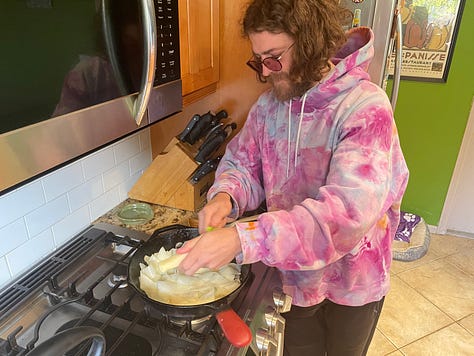
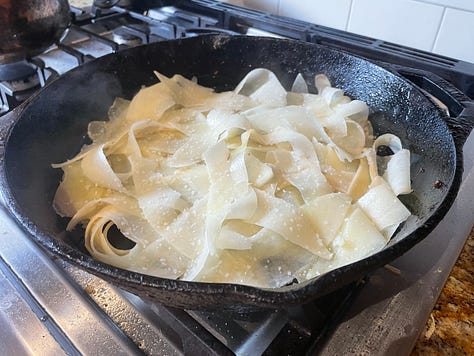
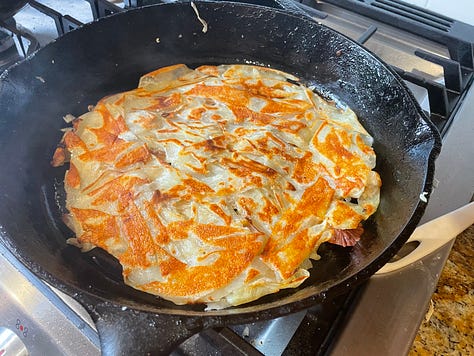
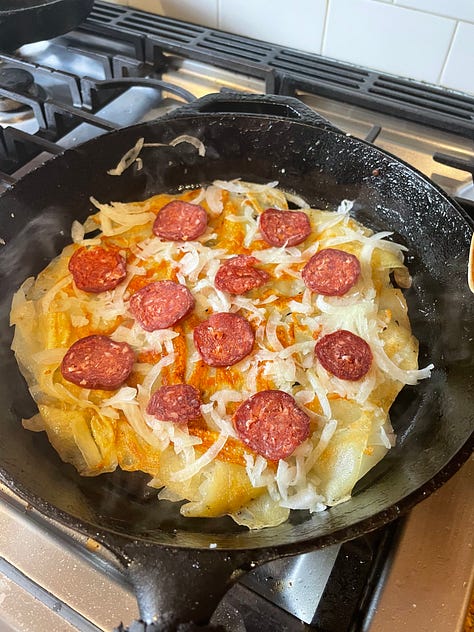
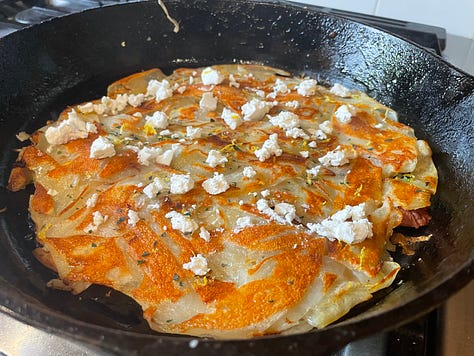
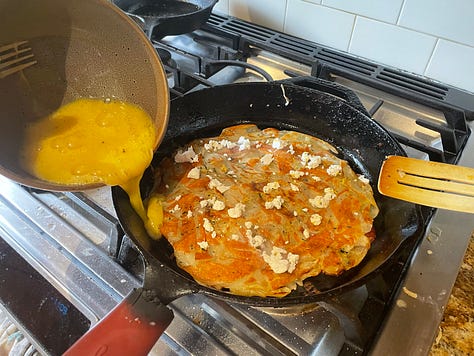
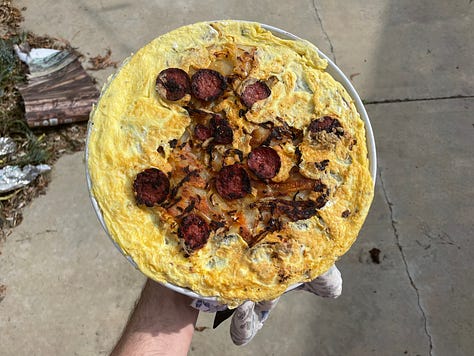
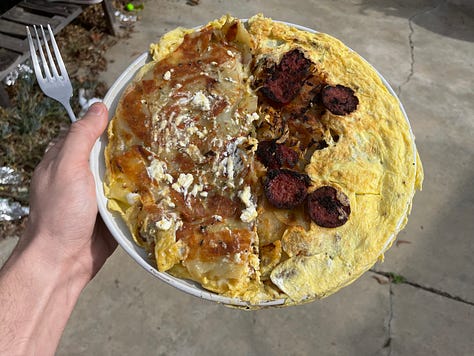
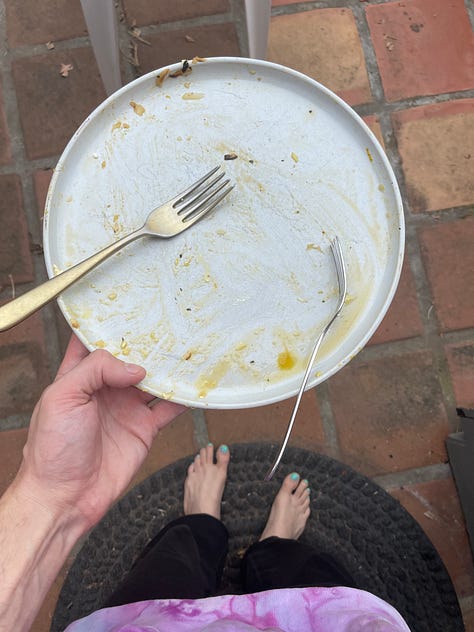
I made John Thorne’s recipe for “Maine Home Fries” which has a cooking time of about an hour, starting with a twenty minute steamy sizzle, then frying over low heat for ten minutes per side of the cube (flipping each potato individually, of course). I’ve shredded potatoes on a box grater, fried them poorly, and ended up with greasy hash browns. Even just this morning, for Christmas day breakfast, I made a batch of overly-complicated home fries. I started three big russets whole in a pot of cold water, added a little salt and vinegar (a Kenji tip), brought it to a boil, realized they were going to take forever, fished them out (ow, OW), cut them into dice sized cubes, returned them to the liquid, simmered them until the edges of cubes were soft and fluffy on the inside and no longer had perfect straight lines but were starting to show some cragginess along the edges, drained them in a colander, returned them to the pot, salted and oiled them, got a half inch of oil ripping hot in a large pan, fried them in two separate batches, turning each cube as it started to get golden, drained them on paper towels once they were done, and about 40 minutes less lifetime later, I had my breakfast potatoes (which went with some eggs scrambled with white american cheese and crispy taylor ham, and a side of spinach for my brother). To be honest, the potatoes were awesome and my family loved them and the joy it brought them almost overshadowed the slight annoyance at how long breakfast took to be ready.

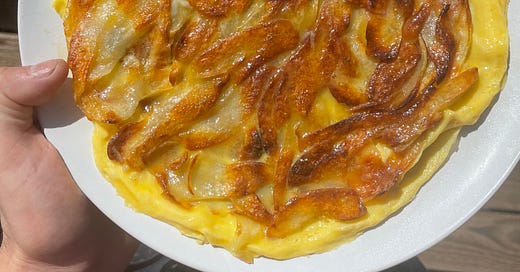


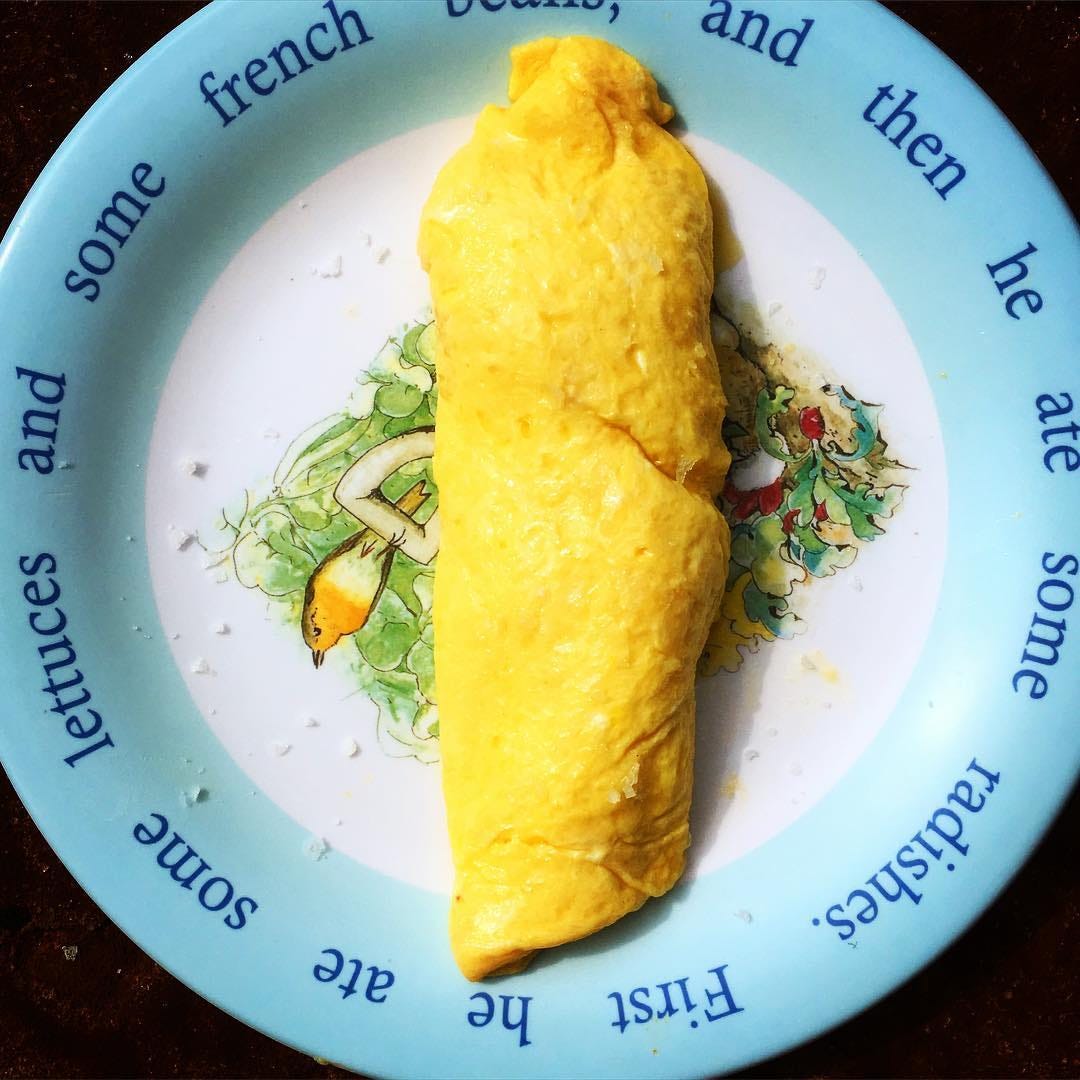
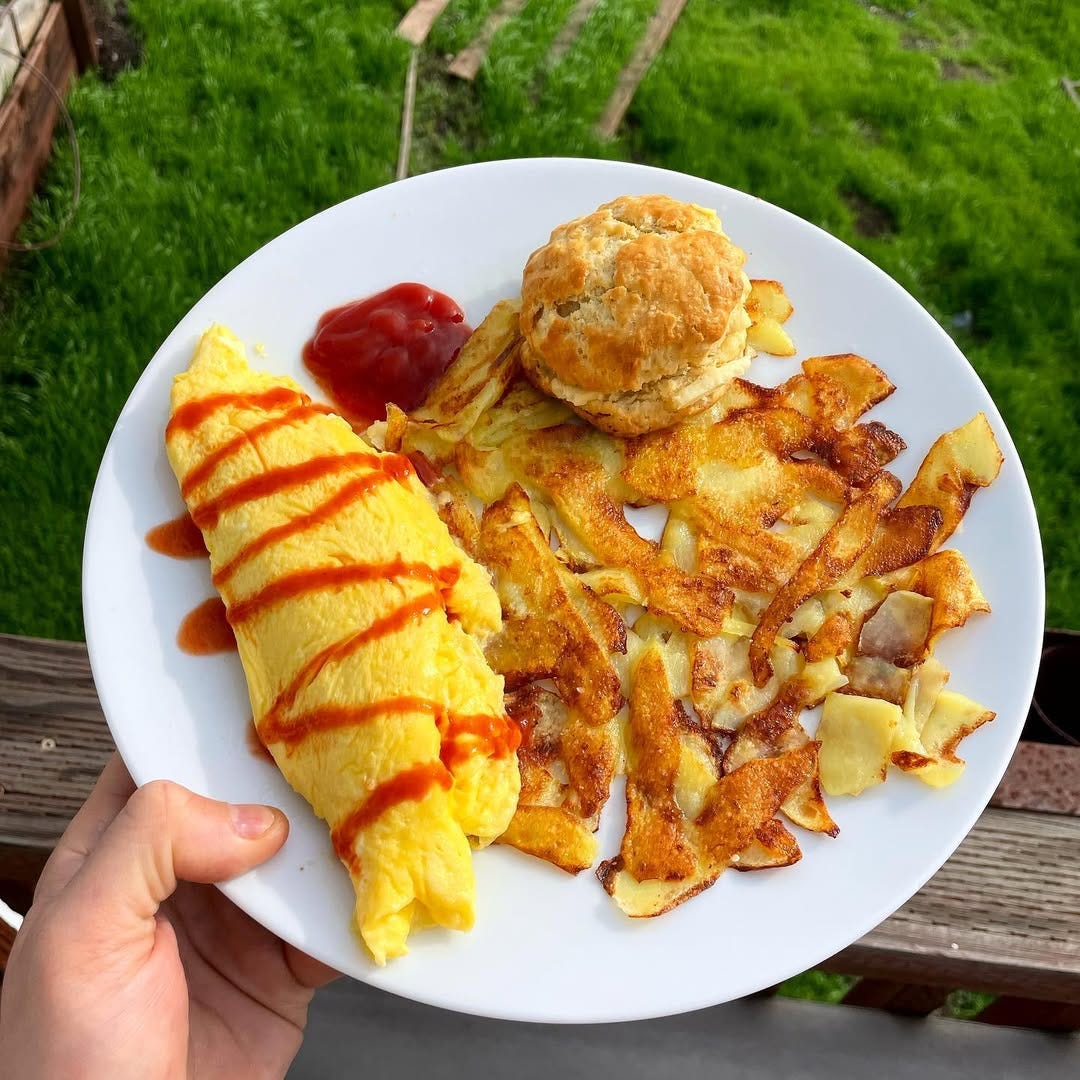


Bravo!
Andrew